Acclimatisation Gardens of the Italian and French Riviera
Stefano Ciabo
21 April – 1 May 2023
Introduction
From the earliest days of the Age of Discovery, explorers have brought back plant species from their travels in order to cultivate them in their home countries, both in the open air or within protected structures. Collections of exotic and tropical plants were established in order to support colonial agriculture or simply for decorative purposes. This is how plant acclimatisation began.
The Italian and French Riviera, due to a favourable microclimate well sheltered from the cold air that comes down from the North, was home to important experiments where non-endemic plants have been introduced and mixed with the local flora. Giving birth to some of the most important Acclimatisation Gardens of the Mediterranean area.
Today, the monitoring, conservation and collection of those species serve as a good indicator of how rapidly the climate is warming, as it has been observed that many plants are now able to survive the winter without protection and they are an integrated part of the Mediterranean flora.
My tour explores four different case studies, often with similar history and connection through their ownership, influence, establishment and development, now home to well-famous Botanic, Public and Historic Gardens.

Giardini Botanici Hanbury, Ventimiglia, Italy
Aims and Objectives
- Visit Acclimatisation Gardens focusing on their history, development and plant collection
- Expand knowledge of plants non-endemic to the Mediterranean region that have been introduced since the plant acclimatisation began
- Study how exotic and tropical plants have been mixed with endemic species and how they are, today, an integrated part of the Mediterranean flora
- Share knowledge and experience with fellow horticulturists
Jardin Botanique Val Rahmeh, Menton
Avenue Saint-Jacques 06500 Menton, France

Dasylirion longissimum, Asparagaceae, native to Mexico, in the terrace of one of the villa’s balconies
A Little History and the Site Today
Jardin Botanique Val Rahmeh Menton began as the late 19th century estate of the de Monleons, a noble family of Italian descent.
The property was surrounded on the south side, facing the sea, by vineyard and fig trees, on the West by fields of wheat, on the valley side by a vegetable garden and orchard, and at the back by century-old olive trees.
In 1905, a British army general and his wife acquired the property and settled in this unique scenario open to the sea and sheltered by the mountains, converting it into a garden dedicated to Mediterranean species.
In 1925, he hired the architect Frederic Orrigo with designing a Villa in the Italian-Provençal style and named the property Val Rahmeh, which stands for ‘Valley of Tranquillity’.
A lover of exotic plants, like many of the British people at that time who have been enchanted by the Riviera and decided to move there due to mild Winters and hot, dry Summers, He planted dozens of Phoenix canariensis along the main entrance.

Phoenix canariensis, Arecaceae native to Canary Islands, along the main entrance
The story of Val Rahmeh tells how the landscape of the Riviera changed over time, as acclimatisation gardens were massively popular under the impetus of English botanical enthusiasts.
Until 1957, several owners or tenants will follow and the last private owner, a wealthy Englishwoman botanist by training, steered the garden even more towards the acclimatisation of exotic plants, intensifying the purchase and exchange of rare and spectacular species from all over the world.

The Aloe collection

Mediterranean and exotic flora beautifully mixed
In 1966 the French Ministry of Education acquired the property entrusting its management to the Museum National d’Histoire Naturelle, which has transformed the place into a botanical garden.
Since then, the management and conservation of the garden’s collections have focused on the acclimatisation and conservation of plants from different areas of the globe.
The garden is today a valuable example of a botanic garden with historical influences, due to the architecture of the Villa, several traditional garden features such as pergolas, arches, terracotta pots, fine planters and balconies with vistas.


Two pictures of the pergola arch of Akebia quinata, Lardizabalaceae native to South-East Asia and Japan
The significant collection boasts 160 plant families, endemic species, exotic plants, flora from both tropical dry forest and tropical rainforest regions, plus water features, a small unheated succulent greenhouse, pots displays, a collection of tropical fruit trees and a citrus orchard.

Caption: Succulents and cacti displayed in pots

The section of tropical rainforest flora
Rather impressive is the collection of bamboo species, dotted and mass-planted around the garden. This includes, amongst others, Phyllostachys aureosulcata, Phyllostachys reticulata and Dendrocalamus asper, a giant bamboo that can reach 30m in height and stems of up to 20cm in diameter.

Phyllostachys aureosulcata, Poaceae native to South-East

Phyllostachys reticulata, Poaceae native to South-East Asia

Dendrocalamus asper, Poaceae native to South-East Asia

A rather interesting use of bamboo canes
A plant that captured my attention most was Erythrina caffra, plant of the Fabaceae family native to Cape Provinces and Mozambique.

Erythrina caffra
Commonly known as African coral tree, it is a spectacular flowering tree, with large clusters of coral-coloured flowers that remarkably stands out in the landscape, particularly as flowers appear on nearly bare branches. The surrounding deep, dark green foliage of palm trees and native conifers further enhance the amazing colour of its flowers, occurring from late winter to early Spring.
Relatively drought tolerant, as it will do better with infrequent deep watering during the dry season, mature specimens can generally survive on normal rainfall. It is not frost tolerant, hence it thrives in the well sheltered French Riviera.
Even if the collections are well separated according to the plants origin and requirement, several sectors show interesting mix and beautiful combinations in colours, form and texture, making smooth and gentle the transaction between different sections.

Aloe marlothii, Asphodelaceae native to southern Africa, under olive tree canopies
The topography of the site made terracing necessary terracing, as for many other proprieties around the Riviera. This characteristic gives the opportunity of open spaces with magical vistas, looking up from the entrance, down from the highest point or towards the surrounding landscape. In these circumstances, you can better see and appreciate the variety of plants beautifully intermingled and enjoy their foliage, flowers, habits and growth coexisting amazingly together.


Two examples of different species from different climatic regions planted together
Some examples of non-endemic species acclimatised in the garden

Portulacaria armiana, Didiereaceae native to Namibia

Brachychiton acerifolius, Malvaceae native to East Australia

Brahea armata, Arecaceae native to North-West Mexico

Callianthe striata, Malvaceae native to South-East Brazil

Streptosolen jamesonii, Solanaceae native to Ecuador, Peru

Ceiba speciosa, Malvaceae native to South America
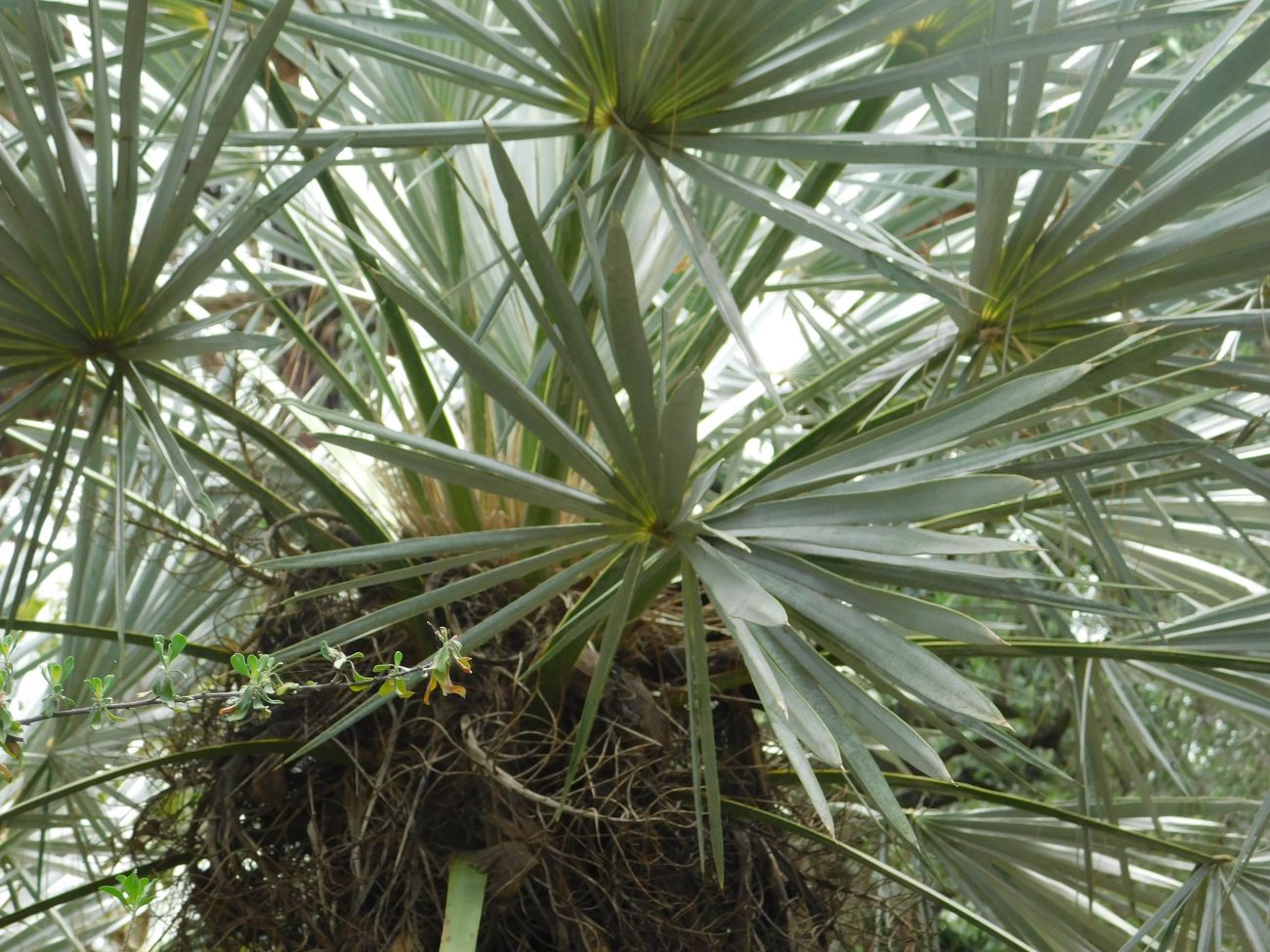
Trithrinax campestris, Arecaceae native to Argentina

Bulbine frutescens, Asphodelaceae native to Southern Africa

Cestrum fasciculatum, Solanaceae native to Central Mexico

Macrozamia moorei, Zamiaceae native to North-East Australia
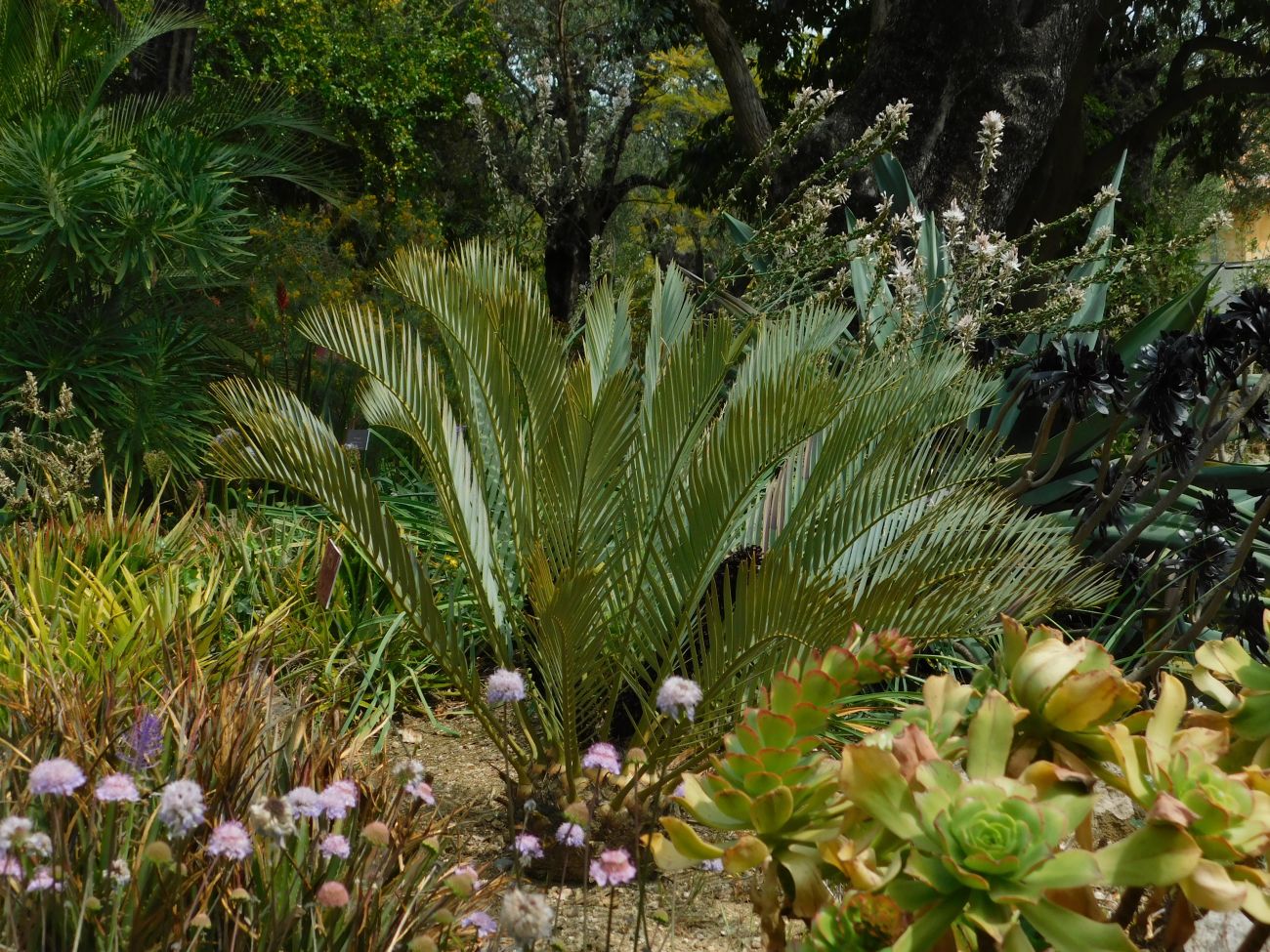
Encephalartos lehmanii, Zamiaceae native to Cape Provinces

Cnicothamnus lorentzii, Asteraceae native to Argentina, Bolivia

Dombeya × cayeuxii, Malvaceae native to Madagascar
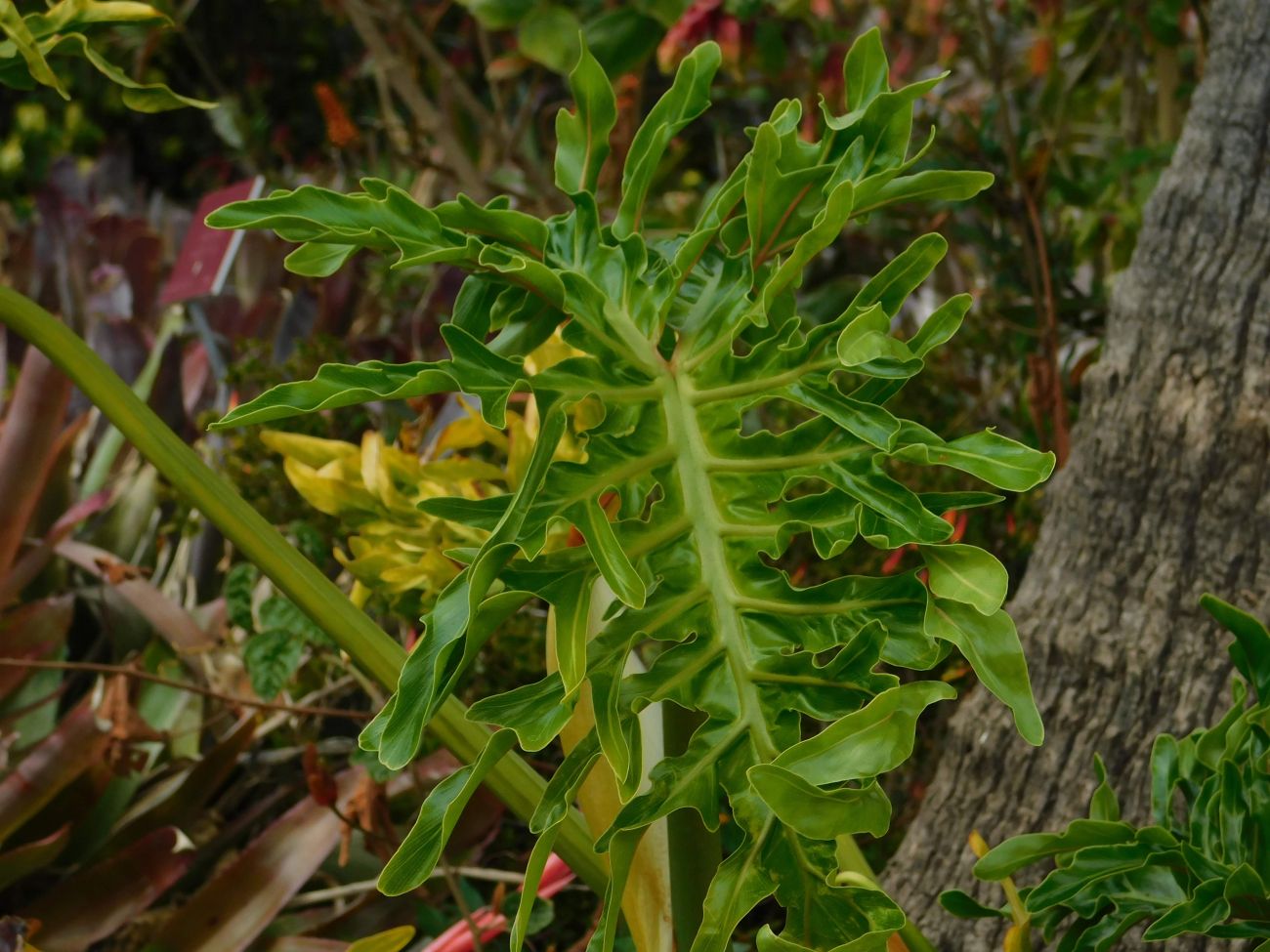
Thaumatophyllum bipinnatifidum, Araceae native to Argentina, Paraguay, Bolivia

Pleroma heteromallum, Melastomataceae native to Central Brazil

Senna artemisioides, Fabaceae native to Australia
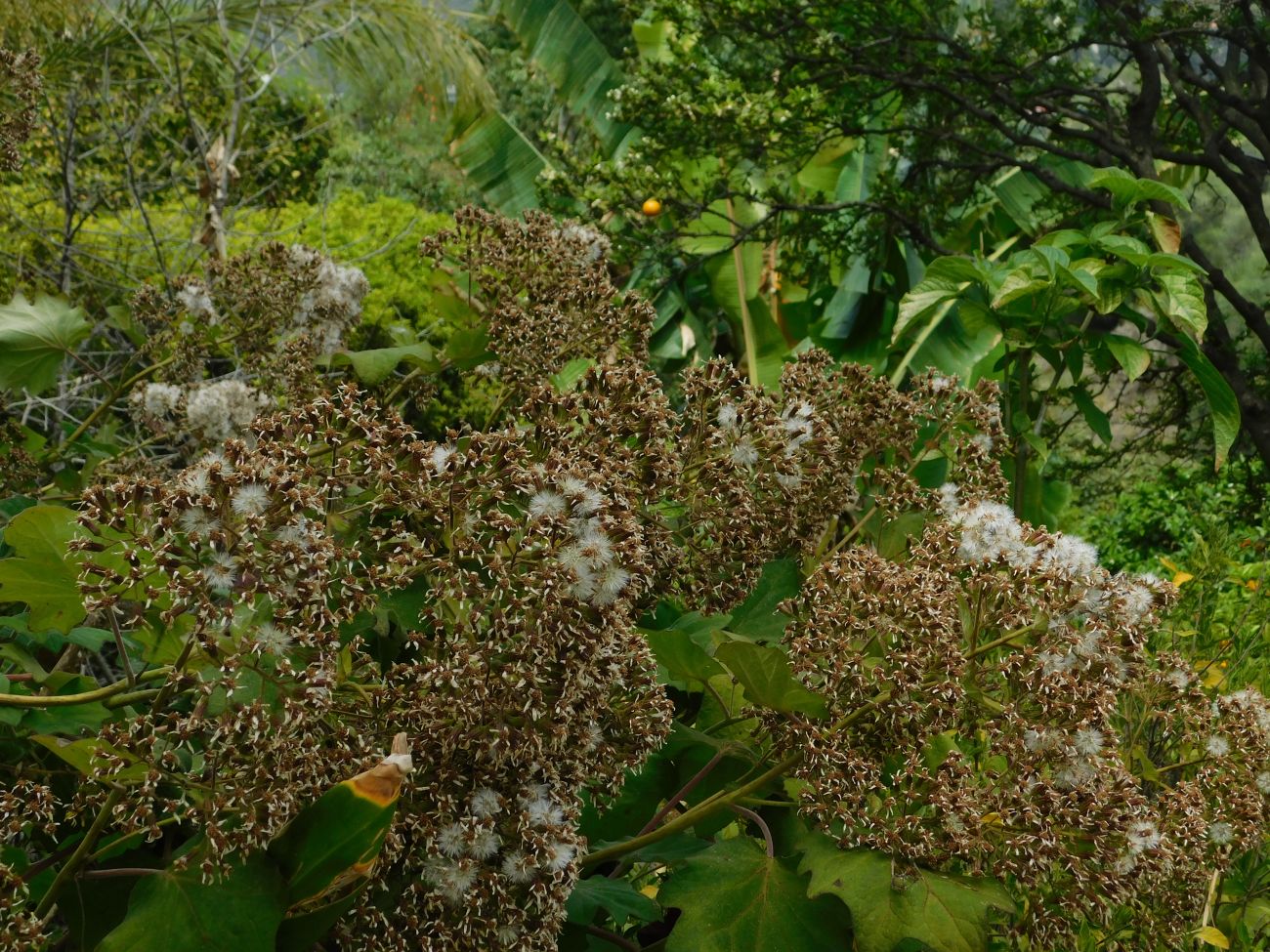
Roldana petasioides, Asteraceae native to Guatemala, El Salvador

Caption: Phylica ericoides, Rhamnaceae native to Southern Africa

Tillandsia usneoides Bromeliaceae native to Central and South America, commonly known as Spanish moss, growing on tree branches as it would do in the wild.

One of the numerous pots arranged around the garden, planted with Cleistocactus winteri subsp. colademono, Cactaceae native to Bolivia


Two of my favourite shots taken at Val Rahmeh Menton
Giardini Botanici Hanbury
Corso Montecarlo 43, La Mortola 18039, Ventimiglia (IM), Italy

Caption: Cacti and succulents planted under Beaucarnea recurvata and Beaucarnea stricta, Asparagaceae
A Little History and the Site Today
The history of Giardini Botanici Hanbury began in 1867, when Thomas Hanbury, a wealthy British merchant and traveller, acquired the property, enchanted by the beauty of the sunny, sheltered, terraced site full of olive and citrus trees overlooking the sea.
He recognised the potential that the frost-free environment had to develop a plantsman’s paradise, in order to create a unique garden where he could acclimatise exotic and tropical plants noticed during his numerous trips, especially in south-east Asia, that would have been rare to see nearby and they could have thrived in that microclimate.
His brother, Daniel, a chemist and botanist by training, was an essential help in order to purchase plants for food or medicinal, utilitarian, and ornamental purposes.
By hiring notable botanists from Great Britain, France and Germany, he was able to develop the plant collection rapidly and successfully, starting with introducing species from Australia and South America.

The garden entrance with Villa Hanbury in the background
The garden did not stop developing and growing after Thomas Hanbury’s death in 1907, thanks to his wife, son, and particularly to his daughter-in-law, Lady Dorothy.
Indeed, she introduced colourful borders and historic features such as statues, arches, pergolas and fountains, steering the design into a more classic and elegant garden, typical of the Italian garden history.

The Cypress Walk

The ‘Four Season’ Temple

The South Terrace

The Japanese Gong
During WW2, the Hanbury family left Italy and the garden was dramatically damaged, starting a decline.
In 1962, due to a lack of resources to intervene and save the garden, Lady Dorothy sold the propriety to the Italian state which, after the restoration and classification of the existing flora, entrusted the University of Genova to keep managing and maintaining the botanical heritage, which is today one of the greatest and largest botanic gardens for acclimatisation of the Mediterranean region.
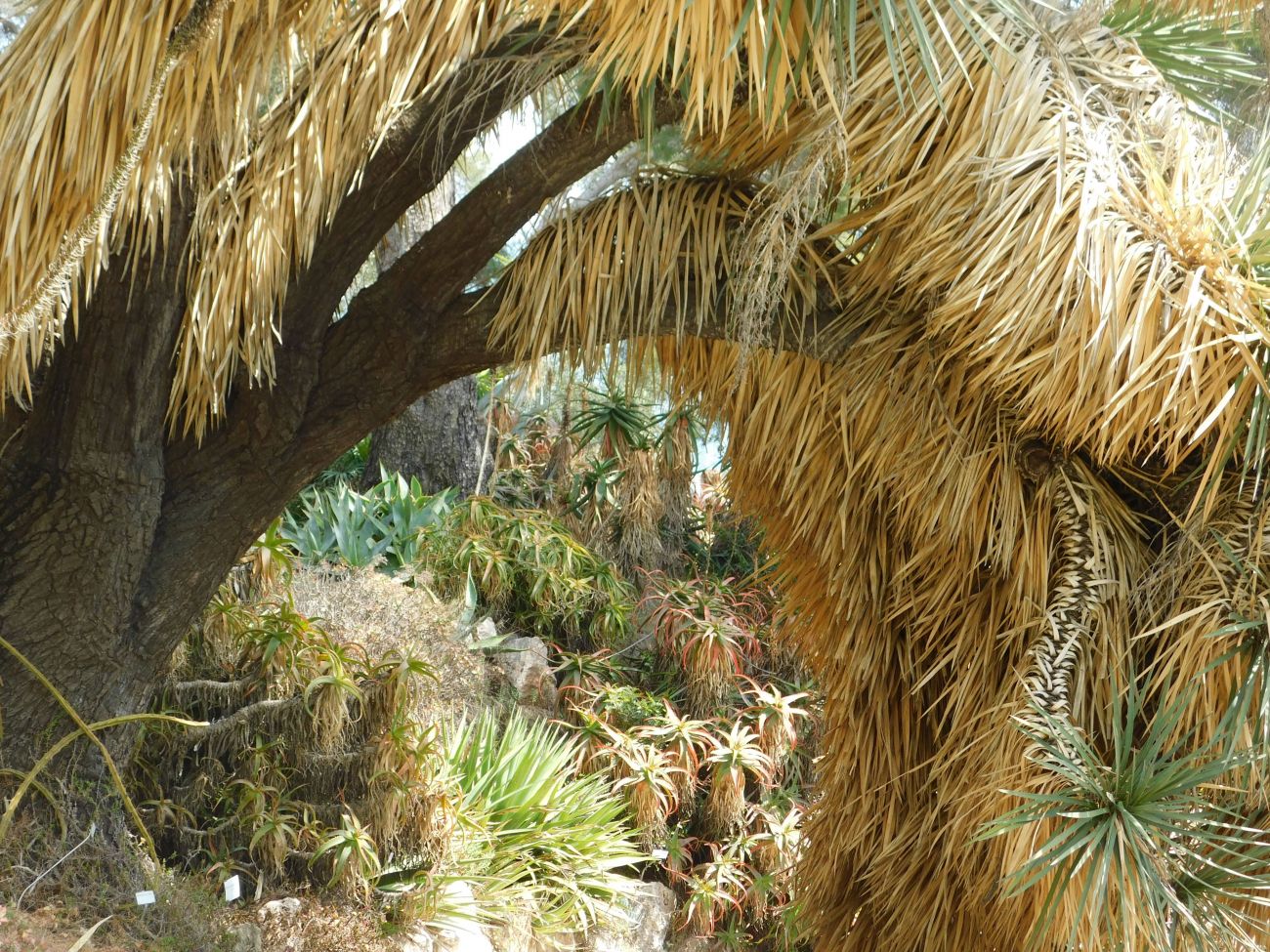
Yucca treculiana, Asparagaceae, native to Mexico, forming a natural arch
The site today has maintained what I believe to be two main ethoses: a stunning botanical collection of species from all over the world and an enchanting, elegant and classic historical design. The mix of rare specimens and architectural features combine to make a botanic heritage garden.
The surrounding landscape, with Cupressus sempervirens and Pinus halepensis, blends with the imported flora which, somehow, seem natural growing there, rather than a man-made design: a fantastic example of the Mediterranean flora embracing non-endemic species. For instance, the flowering stems of agaves (sometimes reaching 11 m in height) the Aloe and Dasylirion seem to mimic the similar upright habit of Italian cypress, creating a rather fascinating repetition in structural impact.

The flowering stems of the agaves mimicking the Italian cypress habit
The sloping site offers opportunities to observe the botanical collection from different directions and heights, with the scenic deep blue sea always a perfect and magical background.
I was utterly amazed by the number of mature trees and shrubs, the like of which I had never seen in my life, thriving in the open air, often reaching impressive height and spread.

Agave americana var. franzosini, Asparagaceae, native to Mexico

Euphorbia candelabrum, Euphorbiaceae native to Angola
Amongst many, two particularly impressed me. The first was Bartlettina sordida, Asteraceae, native to Guatemala and central Mexico. Previously included in the genus Eupatorium, introduced in the garden 1889, it is a dense evergreen shrub that produces, in the springtime, large corymbs of lilac pom-pom flower heads making an impact, especially from a distance. The flowers are fragrant and smell of lilac and honey, good for attracting butterflies. Once again, a plant that does not tolerate frost and prefers light, dappled shade with the advantage of being able to be grown under trees, thus making it a useful choice around the garden.

Bartlettina sordida dotted in different areas under tree canopies

Close-up of Bartlettina sordida
The second one is Cussonia spicata, Araliaceae native from Sudan down to South Africa. Known as cabbage tree, it is an attractive plant, either single-stemmed or with numerous branches, particularly for its striking evergreen foliage with multiple lobes.
The bark is grey and like cork, getting rougher with age.
A curious aspect I found while researching this tree is that its leaves are one of the favourite foods of wild elephants. Discovering this made me even more aware of the unique microclimate of the Hanbury Gardens of La Mortola, and the opportunity of growing tender plants which are rarely seen around the area.

Cussonia spicata
The number of southern hemisphere plants and the rich collection of evergreen species makes the garden full of flowers and interest even during winter.

Alectryon coriaceus, Sapindaceae native to north-east Australia, in the Australian Wood
I was particularly impressed by the area called the Australian Wood, with its large specimens of Melaleuca, Eucalyptus, Brachychiton, Alectryon, and a collection of the genus Acacia, including Acacia × hanburyana, a hybrid obtained in 1902 in the garden by crossing Acacia dealbata with A. podalyriifolia.
Unfortunately, I visited the garden just after the acacia blooming season. However, I liked fantasising about how remarkable it would be witnessing the yellow explosion of acacia flowers.

Acacia × hanburyana, hybrid between A. dealbata and A. podalyriifolia

Acacia podalyriifolia
Other remarkable areas include endless species of Aloe, Dasilyrion and many other exotic plants, a collection of citrus, where I was lucky enough to visit the garden during their fragrant, delicate blossom, a cypress broadwalk, Olea europea, Arbutus unedo and Ceratonia siliqua specimens everywhere, several species of Echium (including E. candicans, E. aculeatum and E. callithyrsum), a large collection of Cistus and Salvia.

Agave stricta (front) and Dasylirion glaucophyllum (back)

Villa Hanbury

The Olive Walk

Echium, Salvia, Aloe and Dombeya
The genus Salvia, belonging to the Lamiaceae family, includes more than 900 species, with very few native to the Mediterranean regions and the large majority endemic to Mexico.
They are extremely useful for extending the season of interest with their long-lasting blossom, highly attractive for the foliage colour and texture, as well as being fantastic pollinator-friendly plants.
The Hanbury collection of Salvia is nestled in the lowest section of the garden, surrounded by olive trees, Opuntia, Echium and many other attractive plants which make the section one of the most vibrant and colourful, almost all year round. Species include Salvia thymoides, S. cadmica (one of the endemics of the Mediterranean native to Turkey), S. canariensis (endemic to Canary Islands) S. mellifera and S. leucophylla (both native to California)
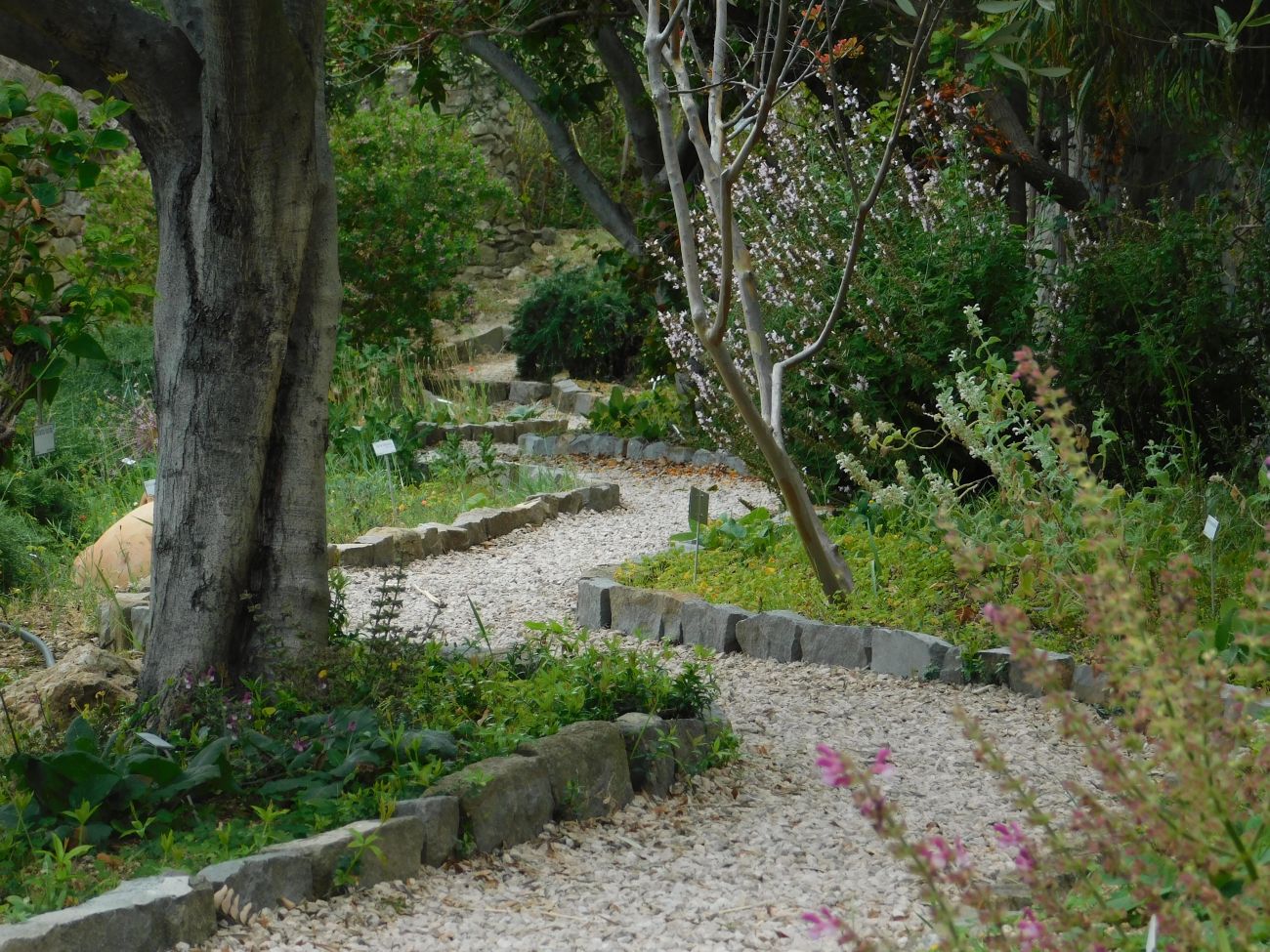
The Salvia collection

Salvia thymoides

Salvia canariensis

Salvia cadmica

Salvia leucophylla
Heading towards the exit, it was breathtaking to look back at the garden, admiring the large collection and diversity which it hosts. The sky and the sea seem to have the same colour and you barely distinguish the boundary. It’s a perfect setting to enhance the flora with its foliage, texture, structure, flowers and colours.

A last glimpse of the garden before heading to the exit
What a treat visiting I Giardini Botanici Hanbury, one of the great gardens of the Mediterranean. A rare, giant example of the 19th century tradition of plant exploration and acclimatisation that has inspired and influenced many other nearby gardens.
Some examples of non-endemic species acclimatised in the garden

Limonium preauxii, Plumbaginaceae, native to Canary
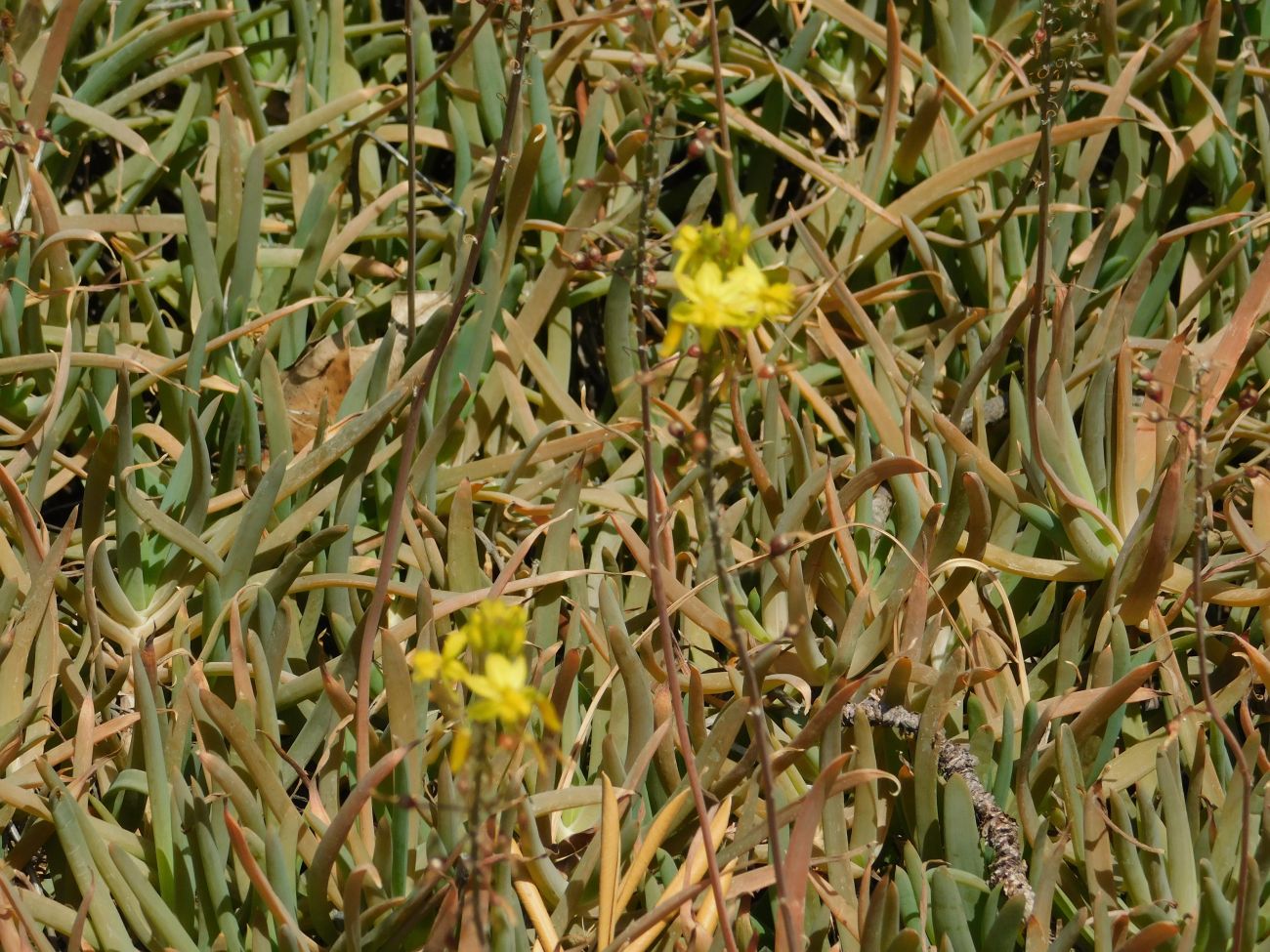
Curio repens, Asteraceae, native to Cape Provinces

Agave × nigra, Asparagaceae, native to Mexico

Justicia brandegeeana, Acanthaceae, native to central Mexico, Guatemala

Doryanthes palmeri, Doryanthaceae, native to east Australia

Crassula ovata, Crassulaceae native to southern Africa

Aloe camperi, Asphodelaceae, native to Sudan, Eritrea, Ethiopia
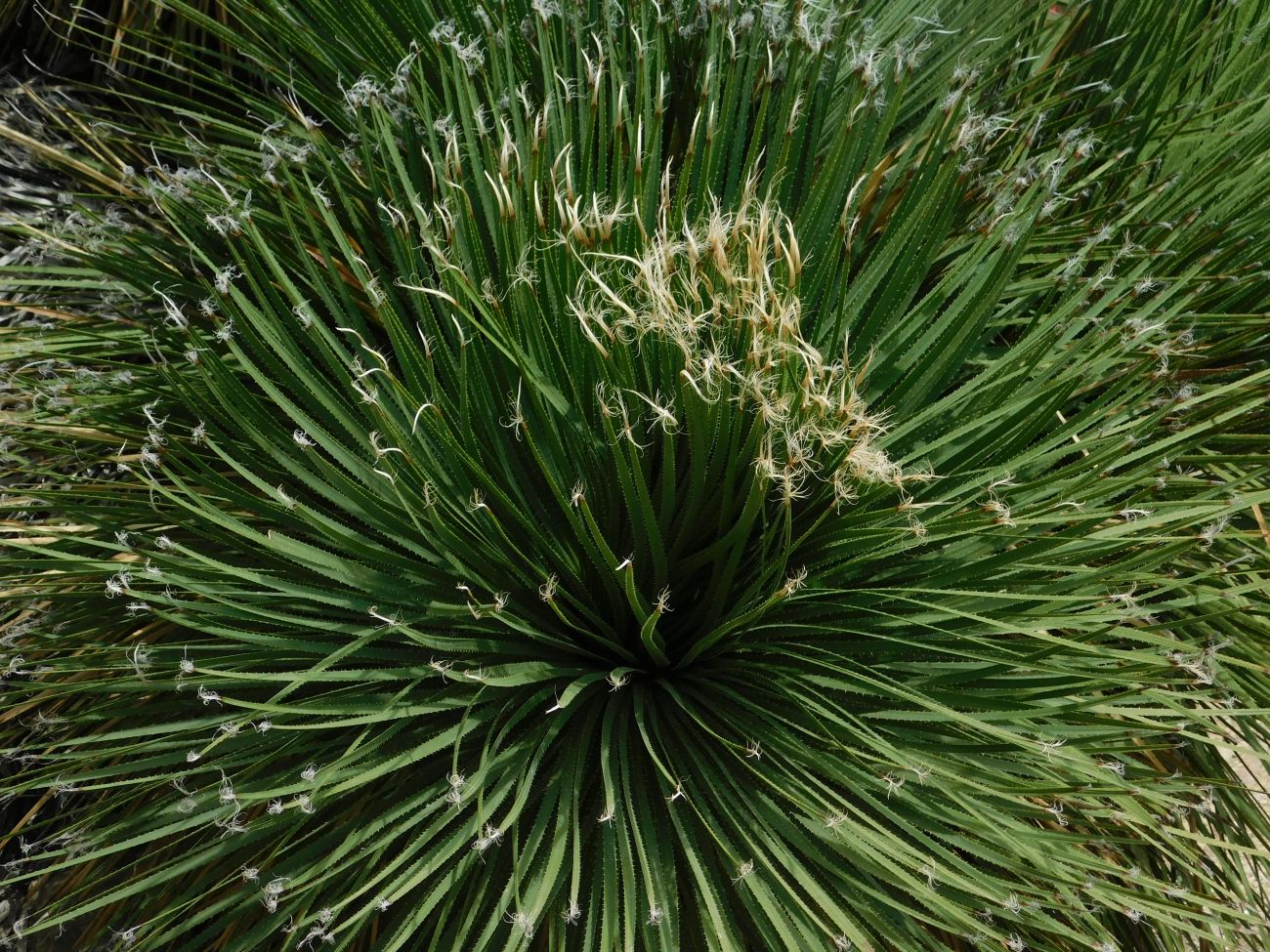
Dasylirion serratifolium, Asparagaceae, native to south-west Mexico

Aloidendron dichotomum, Asphodelaceae, native to Cape Provinces, Namibia

Afrocarpus falcatus, Podocarpaceae, native to southern Africa

Acacia pendula, Fabaceae, native to East Australia

Echium aculeatum, Boraginaceae, native to Canary Islands

Buddleja madagascariensis, Scrophulariaceae, native to Madagascar

Ungnadia speciosa, Sapindaceae, native to central Mexico

Gazania linearis, Asteraceae, native to Cape Provinces
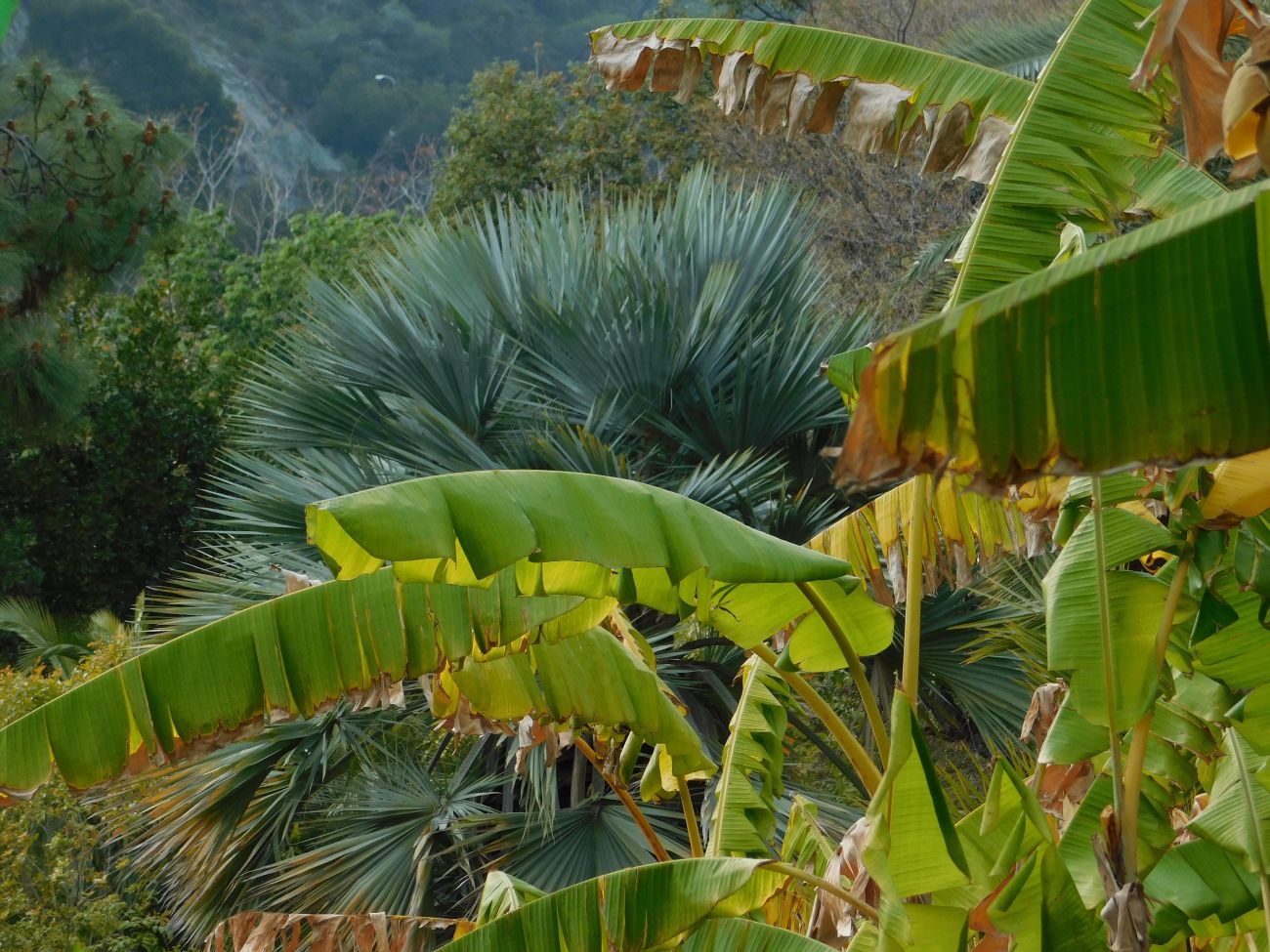

Caption: Colourful, structural and diverse foliage, for both contrast and repetition, was one of the most impressive characteristics in the garden
Jardin Exotique d’Èze
20 Rue du Chateau, 06360, Èze, France
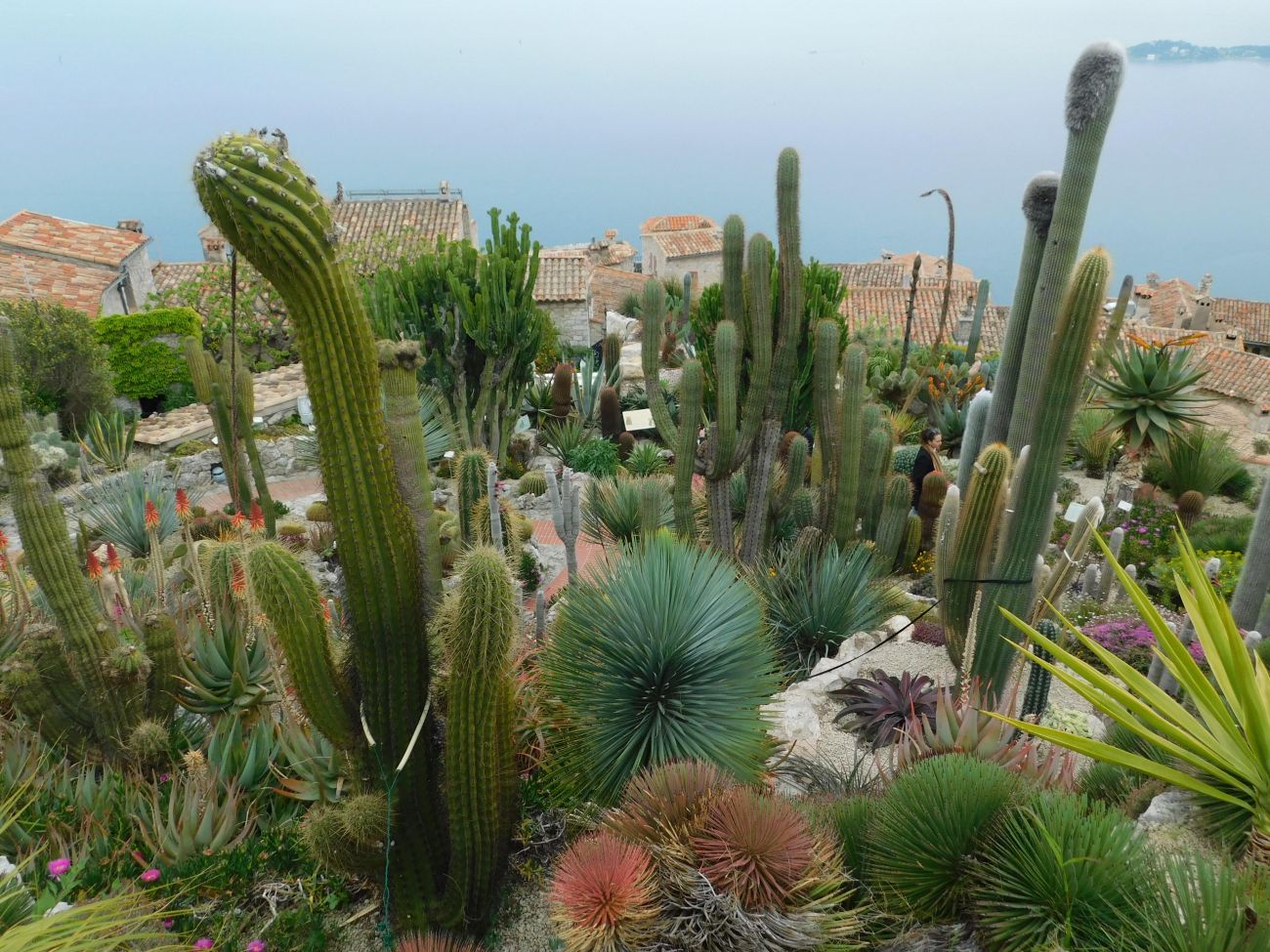
A view of the garden from one of the highest points
A Little History and the Site Today
From a medieval fortress to an exotic garden, the history of Èze village has its oldest traces back to the Iron Age as a fortified rampart to protect dwellings. However, the history of the garden is recent, reflecting in its design the fundamental aspect of Riviera gardens and arid landscapes.
Here, in 1949, facing an exceptional panorama and surrounded by endemic Mediterranean flora, the mayor Rene Gianton decided to create a garden, with the cooperation of Jean Gastaud, the father of the exotic garden in Monaco.
Due to its topography, terraces were set up, beds traced and rock-work arrangements made.
The first stage saw a large number of cacti, Agave and Aloe planted, following the inspiration of nearby historical acclimatisation gardens.

Cacti, Agave and Aloe
Subsequently, the garden was improved with additional ornaments, fountains, water works and sculptures, plus a second large planting of several species, including Yucca, Dasylirion, Crassulaceae and other non-native plants that represents over decades, the man-made landscape of the Riviera.
Today both the village and the garden attract tourists from all over the world, for the exotic plant collection, the large number of restaurants and art galleries, and particularly, for the stunning vista towards the gulf and the surrounding area, offering a 360-degree view from Italy to Saint Tropez, and as far as the Alps and Mercantour National Park.

Vista towards the sea

Vista towards the mountains
Botanically speaking, I found the view of the surrounding flora particularly impressive, with masses of Euphorbia dendroides colouring the rocky and arid area with its red branched stems.
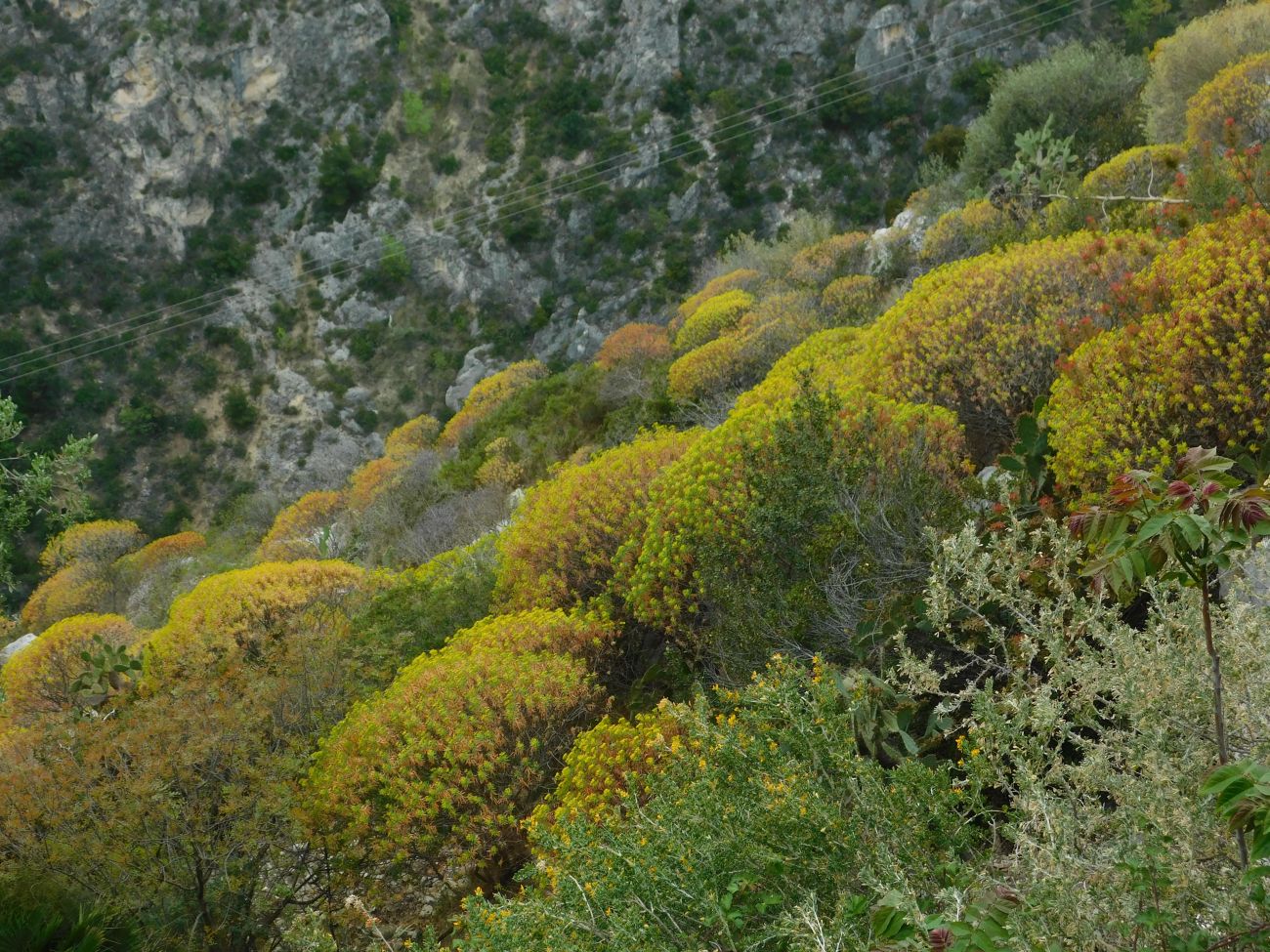
Euphorbia dendroides in the surrounding landscape
Even if the garden includes a few native Mediterranean species such as Cupressus sempervirens and several species of Euphorbia, the contrast with the structural shapes of the countless exotic plants and the surrounding vegetation is remarkably interesting.
Indeed, I found it inspiring and extremely useful to look at cacti, succulents and other exotic plants for their colourful foliage and distinct structure, and how they can bring interesting planting combination, contrast and texture value when merged with different species, or even when mass-planted and mixed with rocks, sculptures, water features, within drastic changes in topography and scenic vistas.


Sculptures around the garden with scenic vista
The Jardin Exotique of Èze was a great opportunity to value the choice and combination of a desert flora within a Mediterranean environment due to the favourable microclimate that does not require winter protection and give to those species perfect conditions to happily grow and amaze visitors.

A picture to understand the complex topography of the garden
Some examples of non-endemic plants acclimatised in the garden

Cleistocactus strausii, Cactaceae, native to Bolivia

Cephalocereus senilis, Cactaceae, native to north-east Mexico

Opuntia gosseliniana, Cactaceae, native to north-west Mexico
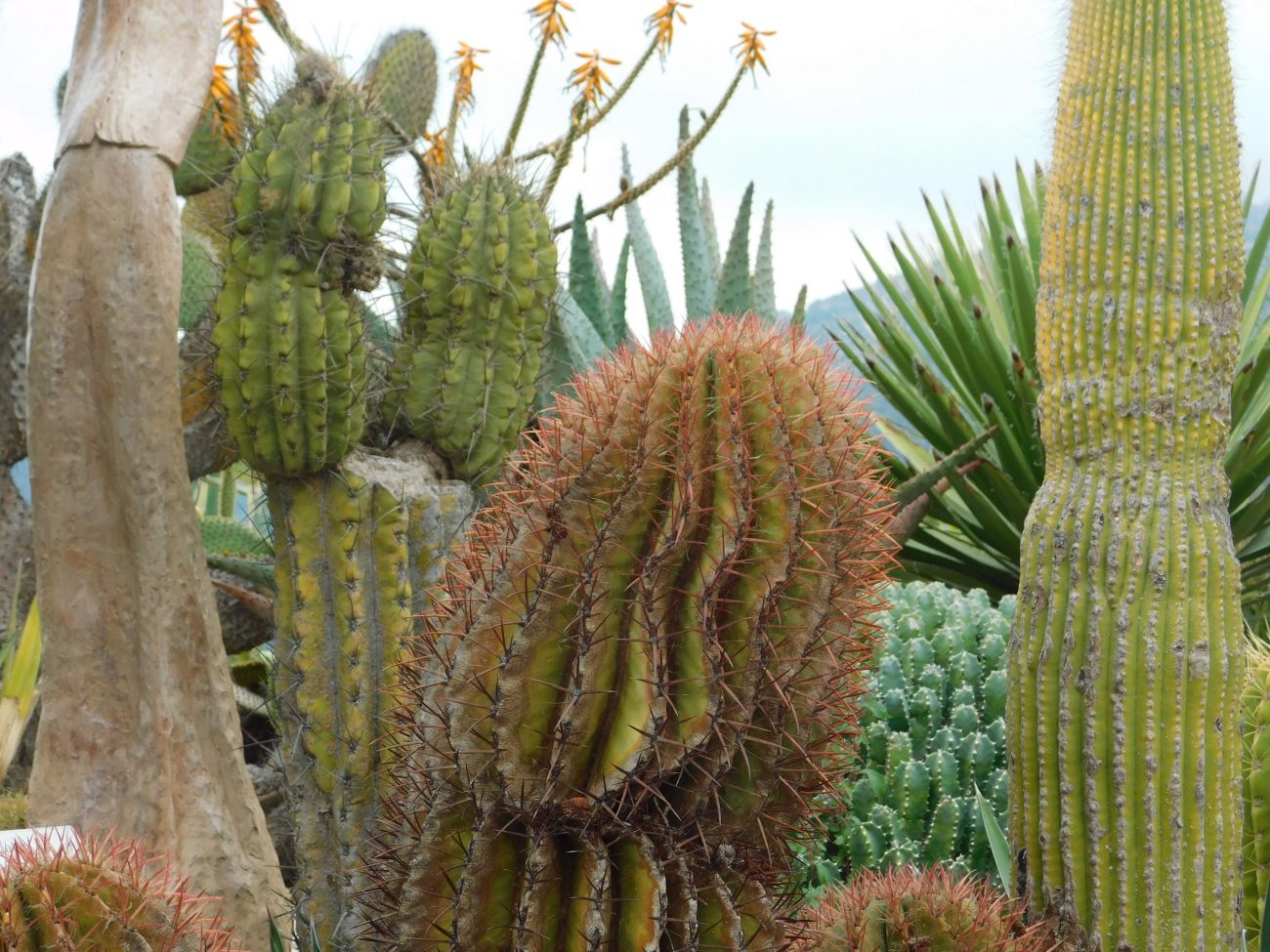
Ferocactus pilosus, Cactaceae, native to Mexico

Spectacular blossom of Aloe

Yucca baccata, Asparagaceae, native to North Mexico
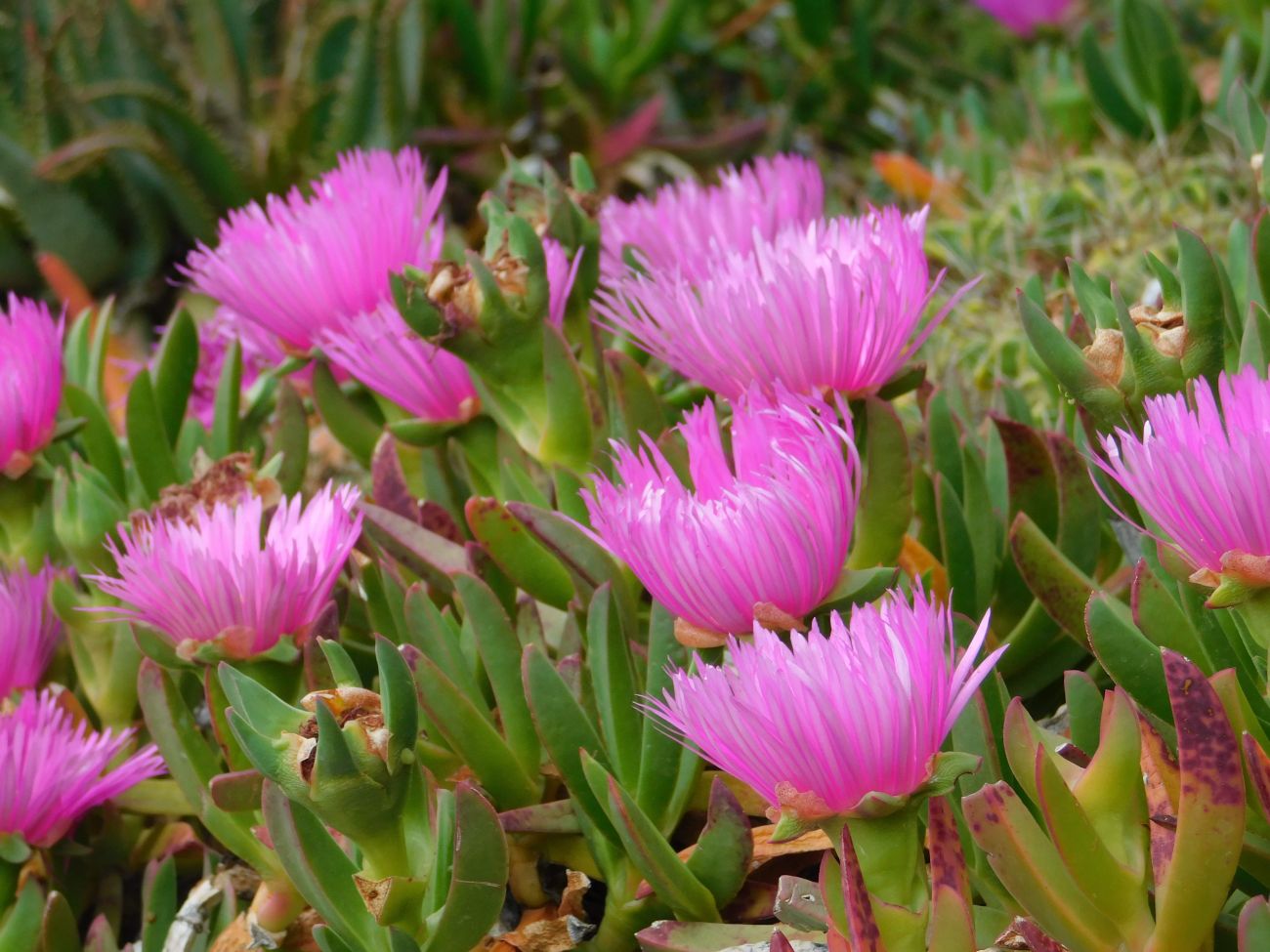
Carpobrotus acinaciformis, Aizoaceae, native to Cape Provinces

Fellow horticulturists and friends visiting the garden: Takayuki on the left, me in the centre and Giulio on the right
I Giardini di Villa della Pergola
Via Privata Montagu, 9, 17021 Alassio (SV), Italy

Villa della Pergola
A Little History and the Site Today
Villa della Pergola, in both its gardens and architecture, represents an example of cultural and economic interaction between the Italian Riviera and the United Kingdom.
Nestling in the Alassio bay, overlooking the town and the gulf, the property has been owned, developed and embellished by several wealthy British families, including the Hanburys.
These families found in some towns of the Riviera, and particularly in Alassio, the ideal location to spend the winter, taking advantage of the mild climate and the astonishing vistas from the hills.
Following the trend of plant exploration and acclimatisation, the gardens at Villa della Pergola, home since then of olives, carob trees, and maritime pines, saw the introduction of palm trees like Phoenix canariensis, now an iconic symbol of the Liguria Riviera, and other exotic and tropical species such as agaves and cycads.

Phoenix canariensis around the property. The mass planting of this palm tree over the last two centuries gave the name of ‘Riviera delle Palme’ to the Ligurian sea cost.

Phoenix canariensis around the property. The mass planting of this palm tree over the last two centuries gave the name of ‘Riviera delle Palme’ to the Ligurian sea cost.
Due to the natural contours, the garden was designed on multiple levels terraced by drystone walls, a perfect scenario for introducing pergolas with climbing wisterias, roses, jasmines and bougainvilleas.
These elements made the garden known as a perfect experiment of a new “English garden” in Italy, where it was possible to put together many Mediterranean plants and other species from similar climatic regions around the world.

Pergola with Wisteria floribunda ‘Alba’
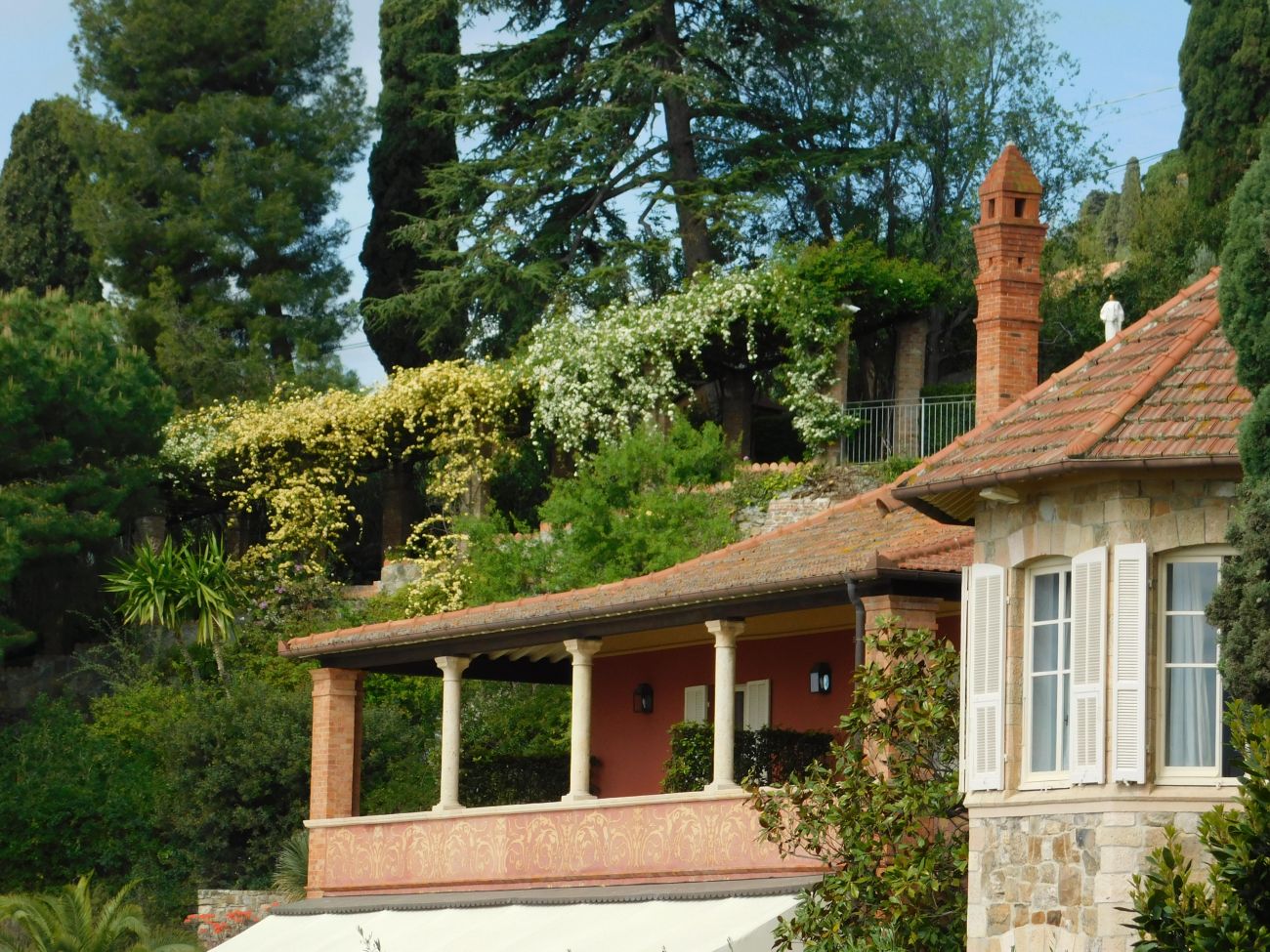
Pergola with Rosa banksiae
A development of the Italian style of gardens, with some design and historical symbols such as statues, fountains, topiary and water features were enriched by non-endemic flora such as imperial dahlias and palms of every kind.

One of the water feature and fountain in the garden, embellished with classic statues
In 2006, after several changes of ownership, a consortium of partners led by the Ricci family purchased the property, avoiding a speculative development that would have partially swept away the gardens and the botanical collection.
Careful restoration of buildings and gardens, with the architect Paolo Pejrone, have transformed Villa della Pergola into a relais hotel with the park open to the public for guided tours.
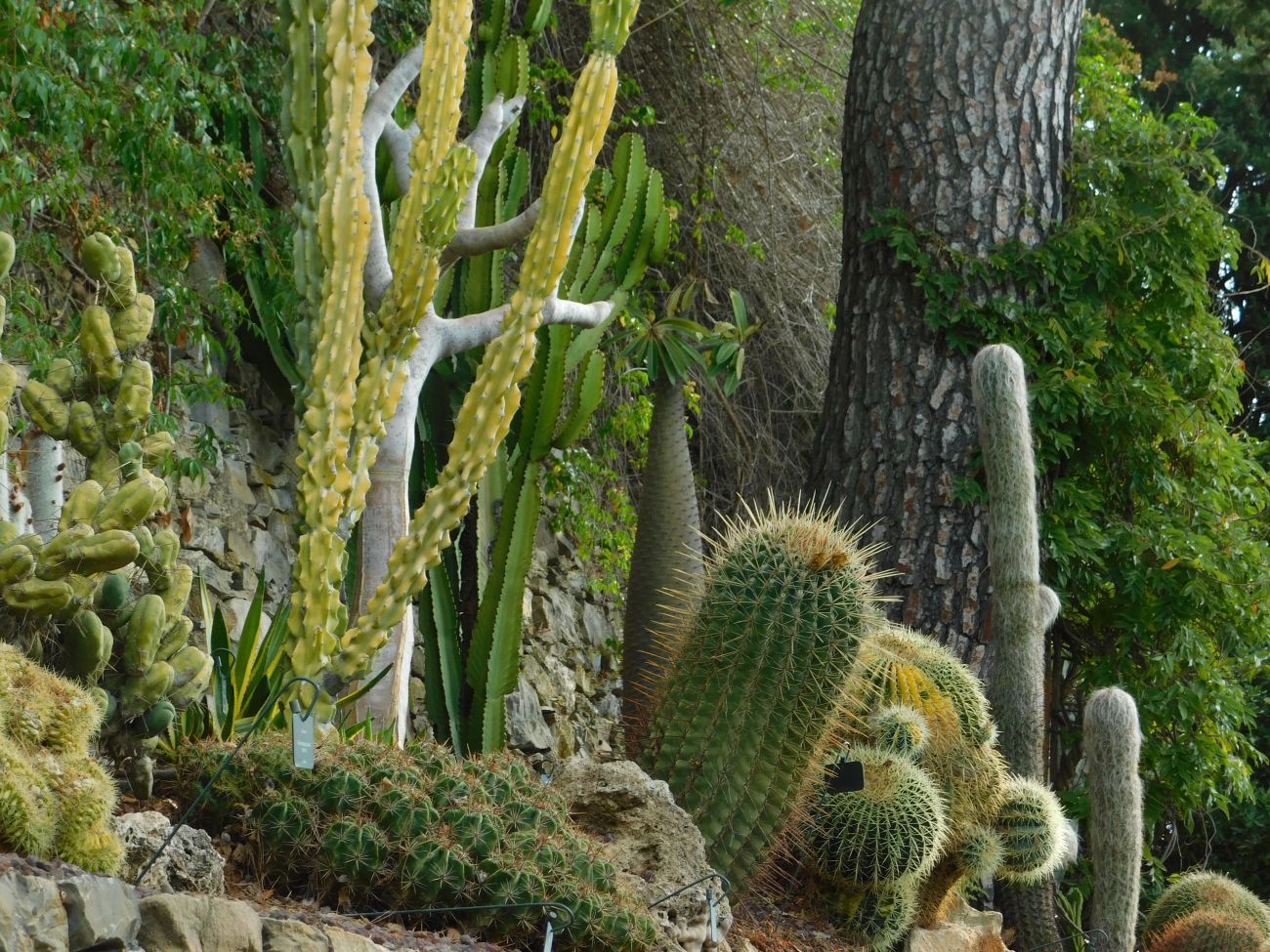
The cactus collection

Opuntia under mature conifers
Today the garden is, in my opinion, a brief of several influences: elements of Italian garden history are still remarkably important, the trend of acclimatisation gardens of the 19th century has added notable pluses and opportunity to extend the botanical collection, the endemic flora has been cleverly incorporated, improved and strengthen, with a successful balance of native and imported species.

A secret, intimate and shady area of native and non-endemic species
Within these strong and influential characteristics, the garden boasts the largest collection of Agapanthus in Europe, with nearly 500 cultivars, creating a spectacular scenario between June and July when the blue to white blossom flows around the garden mimicking sea waves. Moreover, the garden is the home of Italy’s most important collection of wisterias, improved and extended by the Hanbury family in their gardens around Italy and England.
During the restoration, the botanical collection has been updated enhancing the traditional flora of the area, particularly on introducing a citrus collection.
This includes Citrus trifoliata, the only deciduous citrus fruit, Citrus medica var. sarcodactylis (known as Buddha’s hand for its impressive and distorted fruit) and the conservation of the local cultivar ‘Chinotto di Savona’.

Citrus collection including local cultivar ‘Chinotto di Savona’

The Agapanthus collection, the largest in Europe
Adjacent are plants from tropical and exotic regions, including collections of cactus, opuntia, flora from Australia, Asia and South America under canopies of quintessential Mediterranean trees, such as specimen olive, carob and myrtle trees, Italian cypress and maritime pines.
I would like to mention two non-endemic plants, both for botanical and aesthetic importance.
Botanically speaking, it was rather interesting to see a specimen of Wollemia nobilis, Araucariceae native to New South Wales, an extraordinary conifer that dates back to the time of dinosaurs.
This living fossil was thought to be extinct until a small population was discovered in the Blue Mountains of Australia in 1994. Today, there are estimated to be fewer than 100 specimens in the wild, mainly within Wollemia National Park in Australia. What a treat to be able to see it on the Italian Riviera.

The rare Wollemia nobilis
Another plant to be mentioned for its aesthetic contribution is Farfugium japonicum var. japonicum, Asteraceae, native to Japan.
Previously called Ligularia tussilaginea, commonly known as giant leopard plant, it is a lush, large-leaved evergreen perennial. The attractive leaves make it valuable for texture and contrast. Growing happily in shade, as long as it’s not too dry, at Villa della Pergola it’s repeated standing alone and mass planted. For foliage, even in a container, it is a good alternative to Hosta, though less resistant to severe weather.

Farfugium japonicum var. japonicum in the foreground
Not only the botanical collection makes this garden utterly amazing. Numerous vistas towards the bay, the preservation and conservation of water features and statues, balconies, pergolas, seating areas and focal points are some of the main elements that make I Giardini di Villa della Pergola a special place to visit.

Classic statues surrounded by several acclimatised species
A classy, classic, intimate and romantic garden born and developed by cultural and botanical influences between Italy and Great Britain over three centuries, making a unique example of an Anglo-Mediterranean paradise.
Some examples of non-endemic plants acclimatised in the garden
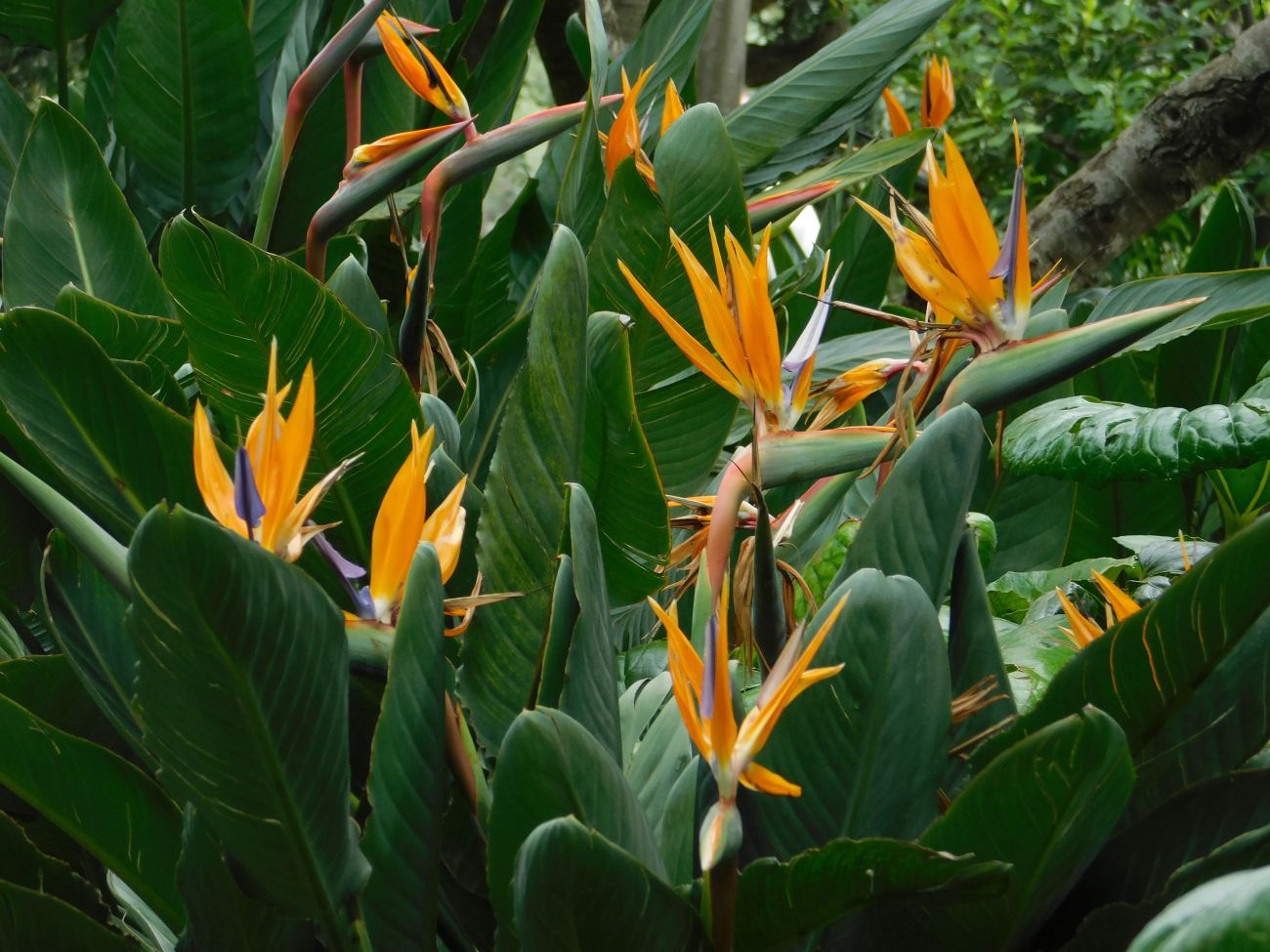
Strelitzia reginae, Strelitziaceae, native to Cape Provinces
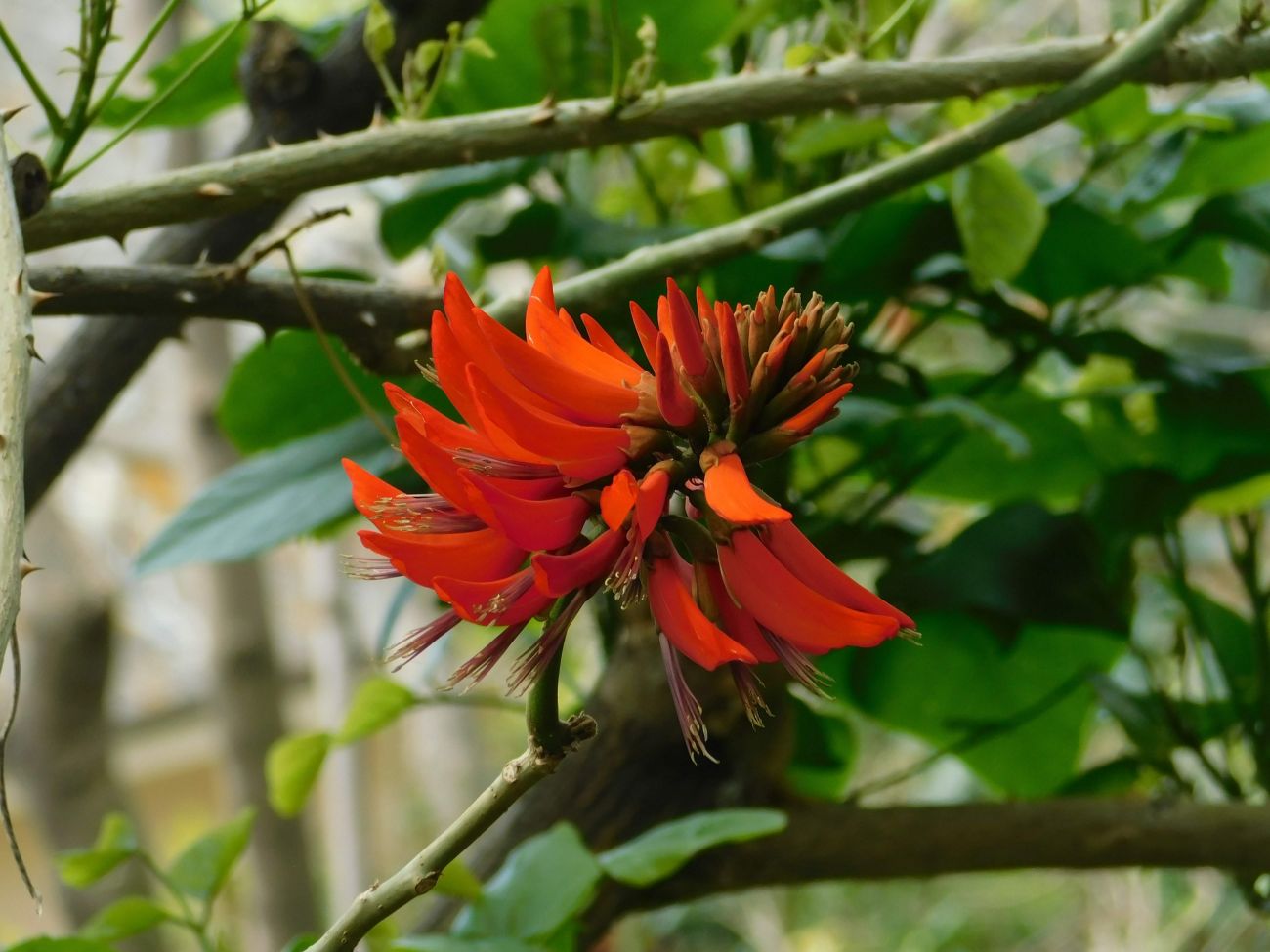
Erythrina americana, Fabaceae, native to Mexico
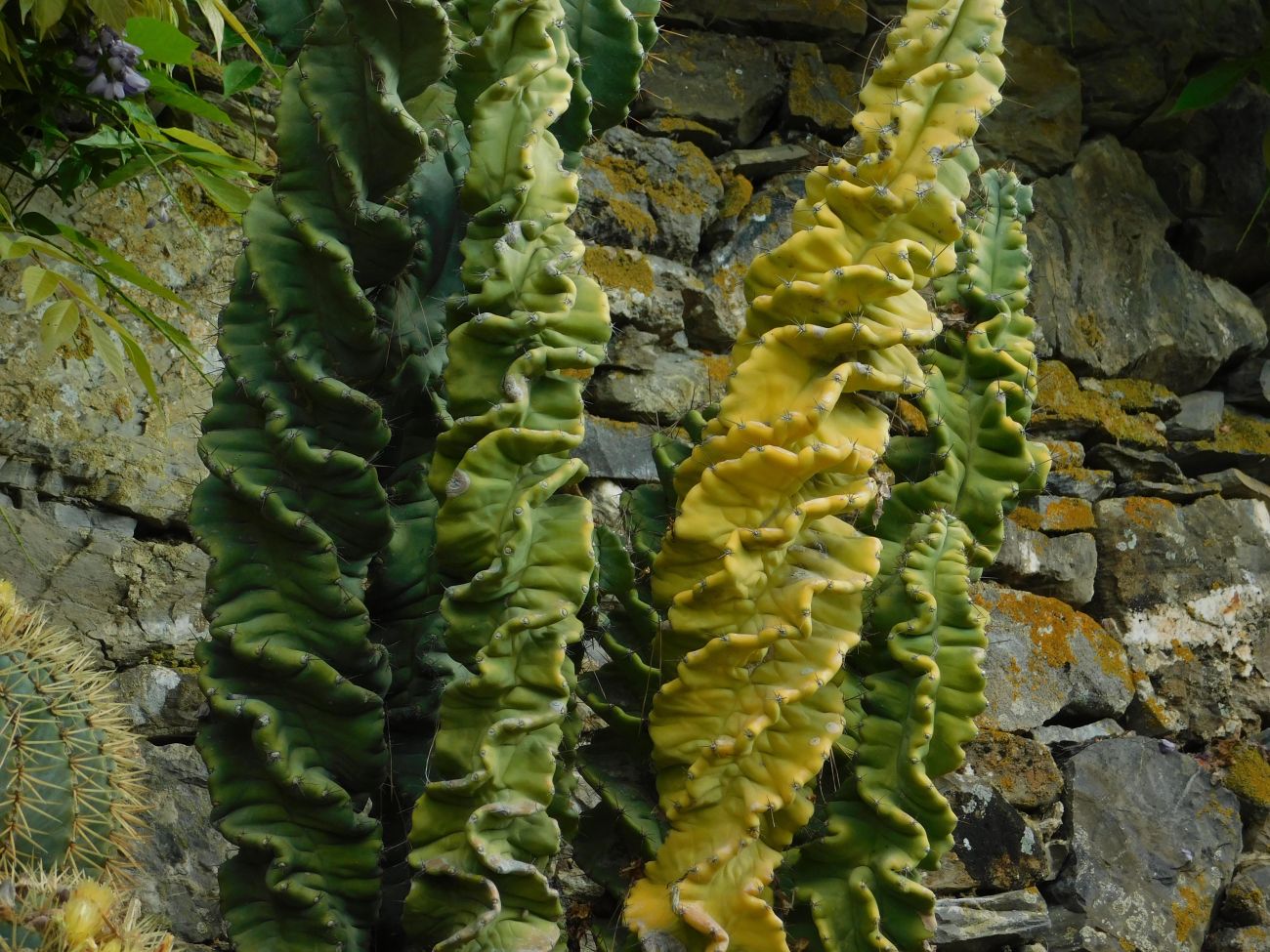
Cereus forbesii ‘Otto’, Cactaceae, native to Argentina, Bolivia, Paraguay

Opuntia rufida, Cactaceae native to Texas, north-east Mexico
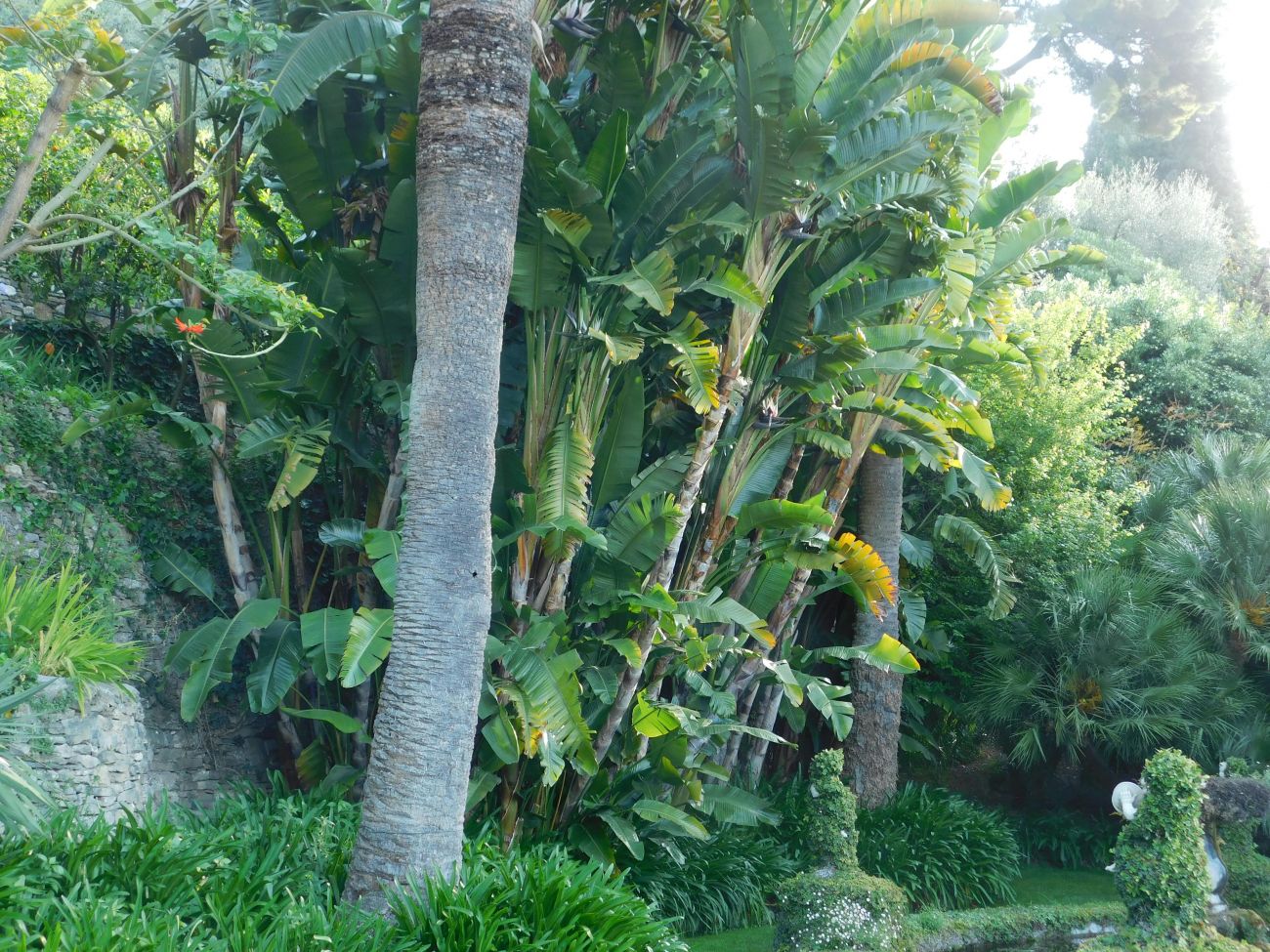
Strelitzia Nicolai, Strelitziaceae, native to Botswana, Zimbabwe and Mozambique

Echium candicans, Boraginaceae, native to Madeira (foreground), Styphnolobium japonicum, Fabaceae native to south-east China
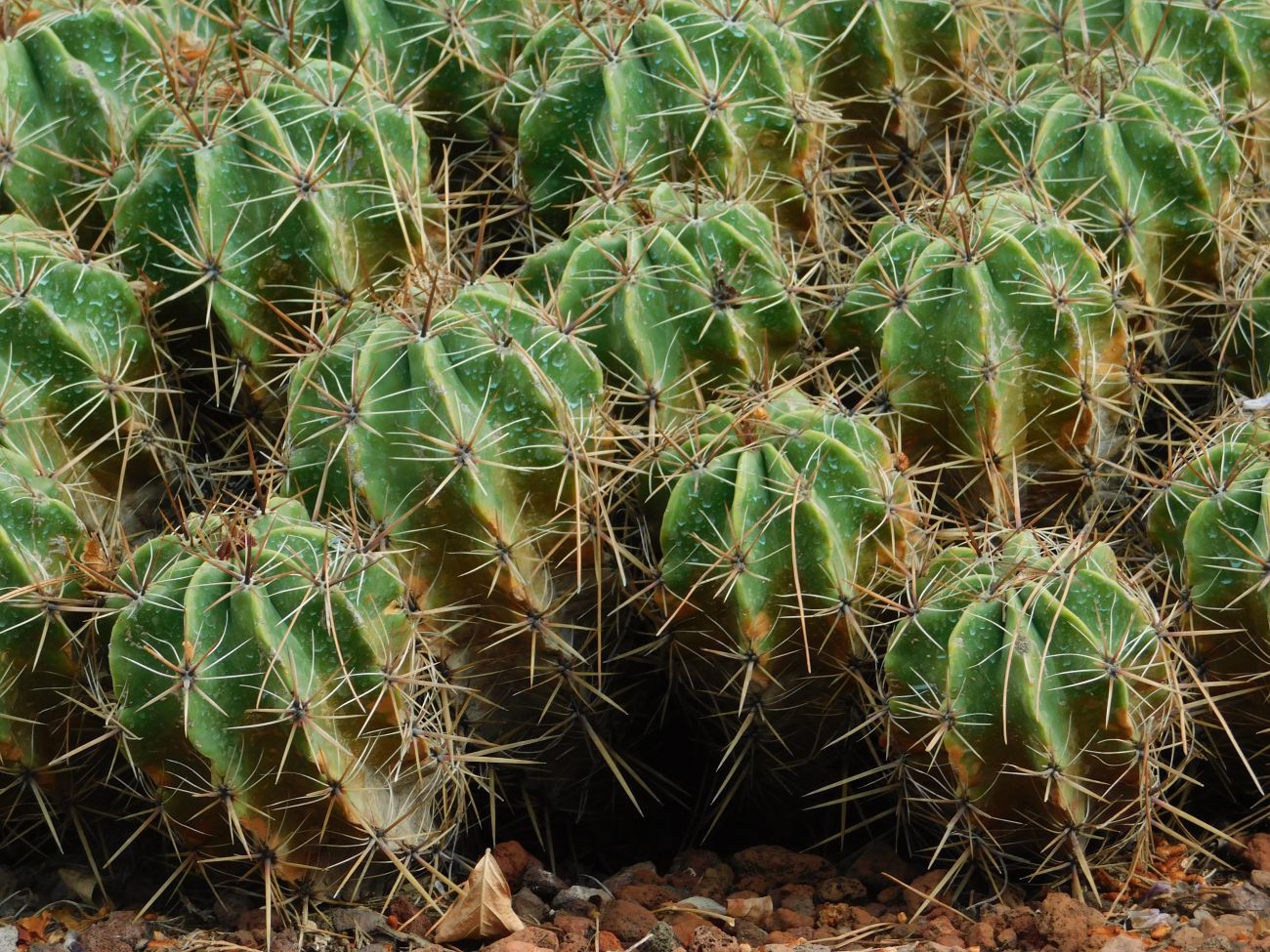
Ferocactus robustus, Cactaceae native to south-west Mexico

Ferocactus glaucescens, Cactaceae, native to north-east Mexico

Encephalartos, Zamiaceae, native to Tanzania

Cinnamomum camphora, Lauraceae, native to Japan, Korea, Taiwan
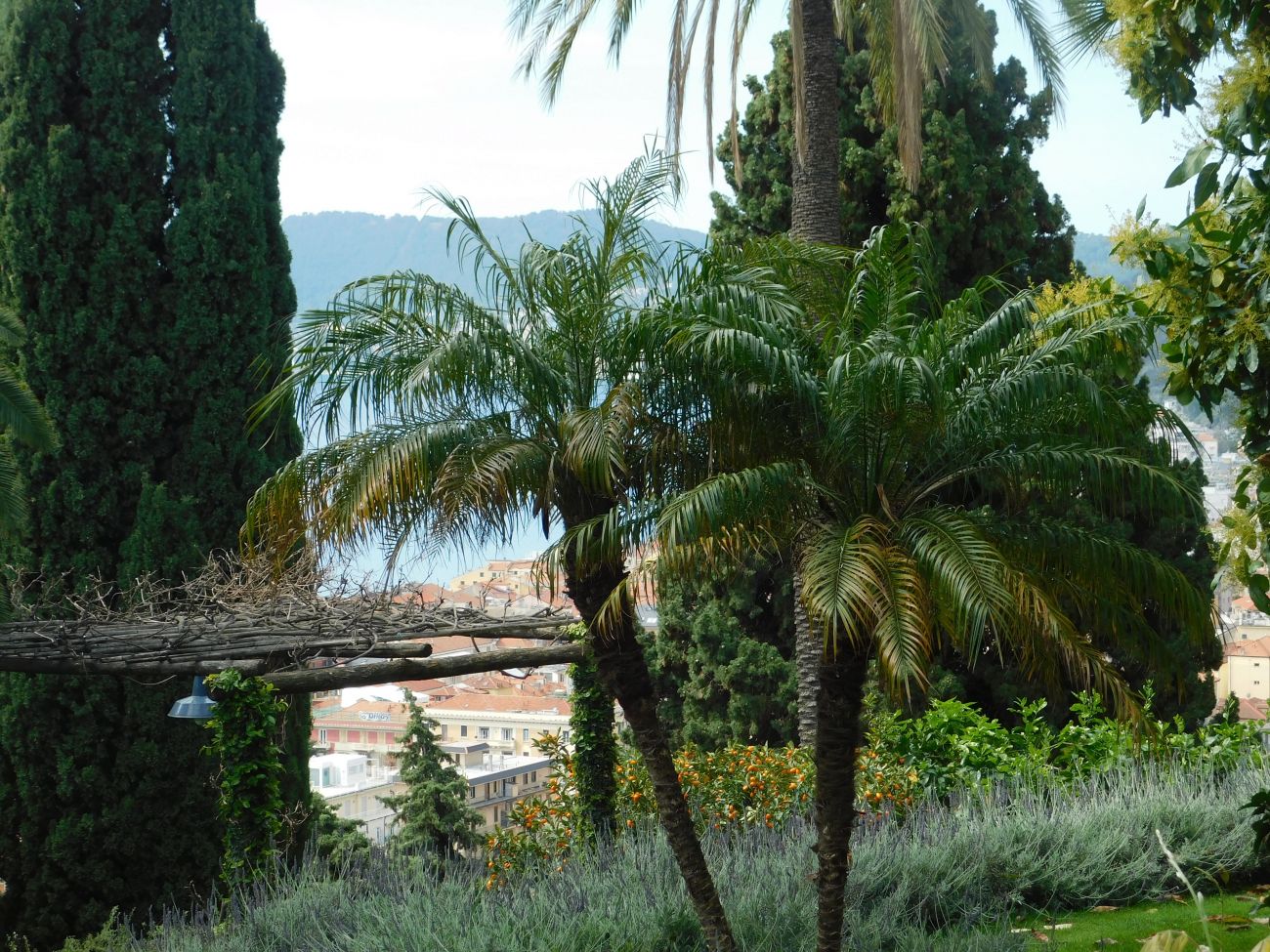
Phoenix roebelenii, Arecaceae, native to Laos, Myanmar, Thailand, Vietnam


Postcards from Alassio
Acknowledgements
I would like to thank the MPG Bursary Committee for generously funding my study tour, which has been a unique and fantastic opportunity and doubtless a crucial experience in my horticultural development and career.
A huge thanks to Giulio Veronese, botanical curator at Giardini Villa della Pergola, for offering me the opportunity to spend 10 days with him and his team on work experience in the garden, maintaining and looking after the botanical collection, while visiting and researching the other gardens of my study tour. Moreover, a special thanks to the Ricci family for hosting and welcoming me to their property.
It was a pleasure to meet Takayuki, gardener and horticulturist from Japan, with whom I shared the work experience at Giardini Villa della Pergola. A special thanks to Stefano, Enzo, Alessio and Dino, the gardeners at Villa della Pergola, for having me with them. It was fun and they have been extremely warm and friendly with me.
Finally, I want to thank Sean Harkin, head gardener at Inner Temple garden in London where I am the trainee gardener, for encouraging me to undertake study tours, supporting my application and giving me important and valuable advice. Alongside, I want to thank Sophie, Christine and Polly from the Inner Temple garden ream, for their daily support and cooperation.
All these people made this amazing experience possible.
Text: Stefano Ciabo

